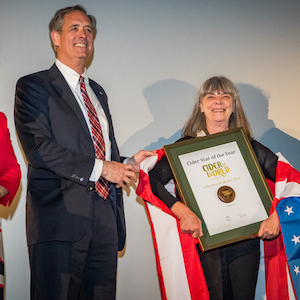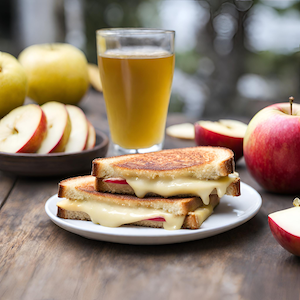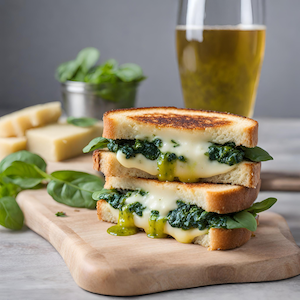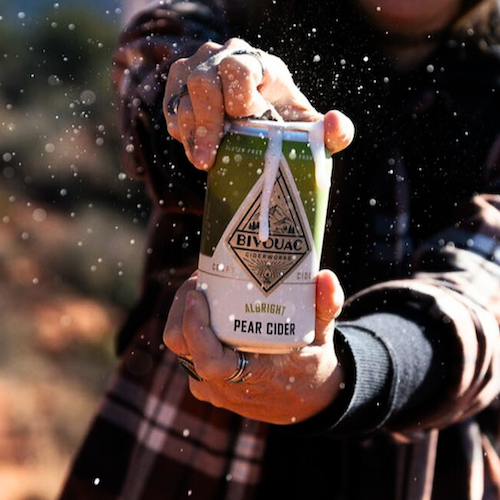Posts Tagged ‘instalink’
June 17: Sensory Analysis Workshop at Bivouac Ciderworks

Interested in learning how to taste cider like a pro? The American Cider Association is proud to announce that we will be teaming up with Bivouac Cider to host a cider sensory workshop. Join us Monday, June 17 from 6:00 – 8:00 PM at Adventure Lodge, 3980 30th Street, San Diego, CA 92104 for an in person workshop.
Over the course of 2 hours, an expert Certified Pommelier will lead you on a guided tasting through two ciders and a food pairing. This hands on workshop will teach you the professional tips and tricks for understanding the elements of local and national ciders. Come sip, swirl, and savor delicious ciders! Perfect for cider lovers at any level
Cost: $40
Agenda:
- 5:30 PM: Doors open
- 6:00 PM: Cider sensory analysis workshop begins.
- 8:00 PM: Networking
Must be 21 or over to attend.
Are you an ACA member? Click here to access the member exclusive discount code in our Resource Hub.
June 27: Live Sensory Analysis Webinar with Brooklyn Cider House

You’re invited to a Live Sensory Analysis webinar on Thursday, June 27th, from 4:00 to 6:00 PM Pacific!
Join our Certified Pommelier panel as they guide you through an immersive sensory experience featuring cider from Brooklyn Cider House in New York.
During this live practice session, you’ll learn how to analyze and appreciate cider like a pro and prep for your Certified Pommelier exam.
Not able to make it to the live event? No worries! The webinar will be recorded and available for you rewatch at any time with your initial purchase.
Cider must be purchased separately. Please be aware that it may take several days to receive your cider order, so we encourage you to purchase your ciders as soon as possible. Also, please verify that cider can be sent to your state before purchasing ciders. Ciders can be purchased from Brooklyn Cider House by clicking here. Use code “CP2024” at checkout to receive $2 off the bundle price.
Cost for the webinar is $30 for non-members and $20 for ACA members. Are you an ACA member? You can find your discount code in the Resource Hub.
Once registered, you will receive a confirmation email. This email is a placeholder for the event. The evening before the event you will receive an email with a Zoom link to the webinar. Please note this link will be sent to the registered email.
USA Featured as Guests of Honor at CiderWorld in Germany
Darlene Hayes Recognized for Her Efforts to Develop the Category

The 16th annual CiderWorld took place in Frankfurt, Germany last week. The combined competition, celebration, and cider expo welcomed the United States as the Guest Country of Honor this year. In addition, the ACA was able to partner with CiderWorld to offer the first Level 1 Certified Cider Guide Workshop & Certification and the first Certified Pommelier Exam in Europe.


CiderWorld’s expo was held at the Palmengarten and featured over 100 exhibitors from 17 countries who shared their cider with attendees.The American Cider Association joined member cideries ANXO and Vander Mill at the USA’s spotlight booth. The ACA also poured cider from Alpenfire Cider, Bauman’s Cider, Metal House Cider, Raging Cider & Mead and Tanuki Cider, highlighting the diversity and range of American Cider to German consumers.
“Many of the visitors to our cider booth were shocked to hear about the size of the American cider industry and taste the quality of some of the ciders made there. It was an incredible experience to share these ciders with German consumers who drink a lot more cider than the average American,” reflected Michelle McGrath, CEO of ACA.


Every year at CiderWorld an individual is recognized as the Cider Star of the Year. The ACA is thrilled to announce that this year the honor went to Darlene Hayes, ACA Educational Content Manager. Darlene was recognized for her efforts to raise awareness of the cider industry around the world, her research into the history and roots of cider in the U.S., and for her work with other cider specialists to develop a consensus on knowledge and standards.
“Darlene Hayes’ extensive knowledge of science and law, as well as her exceptional palate, make her the ideal partner when it comes to the growth and development of the cider industry,” says Michael Stöckl, Managing Director of CiderWorld.
Norman Thatcher Scharpf, U.S. Consul General, joined the CiderWorld award ceremony to meet U.S. cider producers and celebrate the U.S. being the guest country of honor. He formally addressed the audience with remarks on the growth and significance of the U.S. cider market.
Frankfurt and the Hessen region are steeped in centuries of cider culture that have not only persevered but flourished, symbolizing a cherished heritage and a testament to the region’s love for its local produce and traditional crafts. Known locally as “Apfelwein” in German, this cider has been a staple of Hessen culture, deeply ingrained in the social fabric of the region. The art of cidermaking in Hesse evolved from the abundant apple orchards dotting the countryside, with families passing down time-honored recipes from generation to generation. Frankfurt, in particular, emerged as a hub for cider production and consumption, giving rise to cozy “Apfelweinwirtschaften” (apple wine taverns) where locals and visitors alike can gather to enjoy local cider.
It was a great honor to participate in the CiderWorld competition and expo. The ACA hopes that more U.S. cideries will enter the CiderWorld competition in the future.
###
Meet Your Board Member: Josie Mielke

Josie Mielke is the co-owner and operations manager at Urban Orchard Cider Company in Asheville, North Carolina. She was elected to the ACA board of directors in January 2024 to an At Large Seat.
Tell us about your cidery/farm/orchard
Urban Orchard Cider Company is family owned and operated by a crew of passionate and fun-loving cider nerds. We source ALL of our apples from North Carolina, and utilize multiple yeast strains to craft a diverse offering of cider flavor and aromatic profiles. Our current collection of recipes contains over 80 innovative and creative ciders, utilizing fruits, vegetables, spices, herbs, flowers, and hot peppers. All of our ciders are aged a minimum of six months, to allow for natural clarification, and the maturation of natural flavors and aromas.
How did you get into cider?
Like a lot of people I am gluten intolerant. I had dabbled in cidermaking because I went gluten free in 2006 and could not find a cider that I enjoyed. Unfortunately, at that time there was not a lot of selection and I found that they were all too sweet for me. At the same time I had moved back to Asheville and was having a very hard time finding employment due to the recession and Asheville being a service based city. Our family had discussed starting a business after the recession and with the craft beer boom and the accessibility of apples in our area this seemed like the perfect fit. 11 years later, we’re still here, and sometimes I really can’t remember how it all happened. Small business is a whirlwind.
Why did you decide to run for a position on the board?
The pandemic had a big impact on my view of community. Pre-Covid I felt like an isolationist. I kept my head down and plowed through, focused solely on our business operations. Post-Covid and now 11 years in the industry I have a more holistic view of what we can accomplish together. A thriving cider industry is good for all of us. I would be lying if I also didn’t mention that I was getting a little stagnant in my position. The opportunity to branch out of my daily routine and make an impact invigorates me. As a political science and history double major there really is nothing more exciting than dropping a bill in Congress and trying to get it passed. I can’t wait to witness and be a part of the process for the Bubble Bill.
What are your hopes for the future of the US Cider Industry?
I’d like to see cider valued for the artful product that it is. The entire industry has been working for a long time to overcome stereotypes about our category. The fact is that the US is producing some fantastic cider and I think that the public is finally catching on that cider is a versatile, creative and sophisticated beverage. Not to mention it tastes damn good.
How do you describe your cider region?
The South is full of old generational apple farms. Many of which in our area used to grow for Gerber. Urban Orchard has made it a point to always buy local, and now it’s as important as ever. Asheville is booming and the housing market is hungry for land. Many farms are considering sales to real estate developers and farming is a tough gig. Now that Gerber is gone, cider is stepping in as a value added product for growers. While the majority of our fruit is dessert and eating apples, we think that you can craft fantastic cider from blending the variety of cultivars which provide some lovely acids and great sugar content.
What’s your favorite apple to work with and why?
I don’t really have a favorite apple. While the apple is always the star in Urban Orchard products, I really enjoy experimentation with complementary fruits, herbs, vegetables, hot peppers, etc. That may set me apart from a lot of producers as I am not a traditionalist, but my passion comes from a culinary inquisitiveness and it’s the most fun aspect of the business to me.
What is your favorite cider/food pairing?
Ginger infused cider and sushi (yum). Really any nice cider with spicy Asian food is delicious. Cider and ice cream is also very tasty.
What is your favorite nature/cider pairing?
Cider on the beach baby! A better beverage has never been made for a hot day in the sun.
What would you like our members to know about you that they might not know? –non-cider related!
Traveling is my passion, as well as staying fit by challenging myself at the gym, outdoor activities, dancing and yoga. I have two energetic Airedales and a blind little poodle who keep me on my toes. I recently became a certified scuba diver and went to Norway to swim with Orcas! I also do volunteer work such as working the polls during elections, planning fundraisers for food security, and assisting with care for mistreated animals.
From Snack to Sensation: Elevating Cider and Cheese for National Grilled Cheese Day

It is widely known that cider and cheese make exceptional pairings, but can we upgrade an excellent snack into the perfect meal? For National Grilled Cheese Day, I took to my favorite aisle in the grocery store to find new ways to bring cider and cheese together.
When considering pairings, there are a few things I like to start with
- Match intensities: This can be very important when working with strong flavors like those found in blue cheese.
- The 4 C’s: Whether you start with the cheese or with the cider, consider if there are elements of each that you wish to balance out or to bring to the front by using the cut, complete, complement, or contrast methods.
- Consider your condiments: Condiments can make or break a pairing so don’t forget about them.
- Don’t underestimate the power of bubbles: Especially when working with buttery bread and strong cheese, allowing the carbonation to help cut through the fat can be very useful.
In this instance, I like to start with my type of cheese and then choose my cider style and complete the dish with bread, condiments, and other add-ons. In order to showcase the wide range of ciders available I have made pairings for all 5 of the Cider Families: Cider, Perry, Fruit Cider, Botanical Cider, and Dessert Cider.
Cider

Fresh mozzarella on a toasted baguette with crispy bacon and pistachio crumbles is cut and complemented by a cider made in the traditional method. The sparkling nature will cut through the buttery bread and fatty bacon and bring complementary fruity and vegetal qualities.
Smoked gouda on sourdough with honey dijon mustard, Pink Lady apple slices, and lemon zest is complemented by a harvest driven apple cider featuring at least medium tannin and no more than medium acidity. Consider a single varietal for this pairing.

Perry

Aged cheddar on pumpernickel with a blueberry compote and balsamic vinaigrette is beautifully balanced by the floral acidity and light sweetness of a perry. Consider a blend of both low and high tannin pears to match the intensity of the cheddar.
Fruit Cider
Gorgonzola on multi-seed bread with avocado and arugula paired with a semi-sweet, medium to medium+ acidity fruit cider. Consider a sour cherry cider for this pairing to bring out the nutty and green components of the sandwich.

Botanical Cider

Fontina cheese on potato bread with a basil pesto and fresh spinach can shine brightly with a semi dry botanical cider. Best cider matches for this pairing would have a medium body and at least medium acid that has nutty and green notes.
Dessert Cider
So for the dessert pairing, let me take you somewhere a little off the wall and make a sweet grilled cheese pairing. Brie cheese on a toasted croissant with nutella and fresh raspberries are the perfect match for ice cider that features notes of citrus floral and green.

Cheese and cider are the perfect pairing, and there are endless possible combinations. Don’t be afraid to trust your gut and measure with your heart.
Looking for more information on cider and food pairing? Download our Food and Cider Pairing Basics Guide.
Looking for in person options to learn more about cider and food pairing? Check out our upcoming Level 1 Certified Cider Guide workshops around the country.
ACA Seeks Guest Country for CiderCon® 2025

CiderCon® is one of the most robust, diverse, thorough and connected professional cider conferences in the world. We pride ourselves on being a host to international attendees year after year. The 15th annual CiderCon® will take place in Chicago, Illinois from February 4-7, 2025. We expect well over 1,000 people to attend. We are requesting proposals from other countries to send a diverse representation of their regional cidermaking community to be featured guests of honor at CiderCon® 2025. Previously featured countries are Spain, France, UK, Canada, New Zealand, Ireland, Sweden and Norway. Guests from these countries continue to attend future CiderCons because of the quality programming and because CiderCon® is an exchange of ideas, understanding and knowledge that enriches the global cider community.
Costs: The American Cider Association will waive CiderCon® registration fees, provide up to 5 nights hotel for up to 4 cidermakers, and pay for and help coordinate cider imports for educational sessions. Guest countries are asked to further fund cidermaker expenses (airfare, taxi, per diem). Cidermakers may also fundraise through sponsorships, and we are happy to brainstorm strategies. ACA will also provide professional photos of cidermakers participating in CiderCon®, suitable for PR uses by their home country.
Proposals will be considered on the following priorities: (A) evidence of guest country financial commitment (B) compelling cider story (C) depth of cidermaking knowledge for proposed speakers (D) diversity of proposed speakers, in cider style, cider opinions, and demographics. We are also prioritizing countries that have not been featured before.
Countries in close proximity to each other may want to team up if there are less cideries available in their own country. We welcome creative proposals.
Proposals are due June 1, 2024 at 5 PM Pacific Time. Please contact Michelle@ciderassociation.org if you have any questions.
CiderCon® 2025 Request for Speaking Proposals

Mark your calendars for an unparalleled gathering of minds and talents at CiderCon® 2025, set to transform the vibrant city of Chicago from February 5-7, 2025. As the world’s leading event dedicated to advancing the craft of cidermaking, CiderCon® offers an exceptional platform for networking, learning, and sharing the rich traditions and innovative techniques that define our industry.
This year, we’re casting a wide net to bring together the most knowledgeable, passionate, and visionary individuals among us. We’re looking for presentations that will enlighten and inspire, covering a wide array of topics from best practices and emerging trends to groundbreaking research and process improvements.
To make a successful proposal, please specify:
- Target audience: Role in industry as well as business model
- Skill Level: Is material appropriate for beginner, intermediate, advanced, or expert level audience members
- Key Takeaways: What skill, tool or new understanding will attendees walk away with?
The topics we’re particularly excited about this year include:
- Compliance
- Branding
- Marketing
- Distributor Relationships
- Sales Strategies
- Market Trends
- Human Resources
- Finance
- Safety
- Leadership
- Equity & Inclusion.
If you have insights or experiences in these areas, we want to hear from you!
At the heart of CiderCon® is our unwavering commitment to inclusivity. We believe that diversity fuels innovation and strengthens our community. That’s why we encourage proposals from individuals of all backgrounds, including BIPOC, LGBTQIA+, veterans, and those with disabilities. Furthermore, we’re eager to hear from voices in related fields outside of cider to enrich our discussions and broaden our horizons.
Please submit your proposals to the CiderCon® committee by June 1, 2024 by filling out the Google Form. If selected, you’ll receive a complimentary pass to CiderCon® 2025, including lunches and access to all the fantastic non-ticketed events we have planned.
Don’t miss this opportunity to contribute to the growth and success of the cider industry. Together, we can make CiderCon® 2025 a milestone event that celebrates our craft, fosters innovation, and builds a more inclusive and vibrant community. We can’t wait to see you in Chicago!
April 12: Member Orientation Webinar

Join us for our Member Orientation on April 12 at 11:00 AM Pacific
We are thrilled to announce that we will be holding our first ever Member Orientation webinar! There is such a vast amount of resources that the ACA offers to you all and we want to make sure that you know where to find them and how to take advantage of them. Miranda, our new Membership Coordinator will be leading a short video to go over who we are as an organization, the benefits of being a member, and a tour of our website. We have made a few changes to make the things that you are looking for most, more easily accessible. She will also discuss the easiest ways to manage your membership, give your team access to the membership portal, and answer any questions you may have.
The Orientation will take place via Zoom on April 12th at 11:00am Pacific Standard Time. If you have any questions regarding the Orientation, feel free to reach out to our Membership & Engagement Coordinator Miranda Bradeen at miranda@ciderassociation.org. If you are unable to attend, the video will be recorded and you will be able to watch it at a time that is convenient for you.
We look forward to seeing you there!
May 13: 2024 Annual Membership Meeting

We’re thrilled to invite you to join us on Monday, May 13, 2024 at 12:00 PM Pacific on Zoom for our 2024 Annual Membership Meeting.
During the meeting, we’ll reflect on our accomplishments from the past year, take a close look at our new strategic plan, and discuss how we work together under the big tent of cider in the upcoming year to sustainably grow the cider industry. After the meeting, we’ll have an optional virtual cider hang for anybody wanting to network with your cider peers. Let’s lift a glass together to the great year ahead!
Please note that you must be an Active ACA Member to attend the meeting, but don’t worry if you’re not yet one, you can join or renew your membership by clicking here.
We’ll send you the Zoom link before the meeting on May 13, 2024, so be sure to keep an eye on your inbox. We look forward to seeing you all virtually and celebrating the cider industry.
Government Affairs Update: ACA Lauds the CHEERS Act to Support Bars, Restaurants and Venues with Draft Systems

On March 11, U.S. Representatives Darin LaHood (R-IL-16) and Steven Horsford (D-NV-04) introduced the Creating Hospitality Economic Enhancement for Restaurants and Servers Act (CHEERS Act), a bipartisan effort aimed at supporting local businesses, restaurants, and bars with a focus on draft beverage systems. This legislation seeks to revitalize the hospitality industry by expanding tax incentives for investments in energy-efficient systems that include keg and tap property.
The American Cider Association has joined the Beer Institute, the Brewer’s Association, National Beer Wholesalers Association, the National Restaurant Association, the Independent Restaurant Coalition and others in applauding this effort. By offering support for the use of draft lines and keg equipment in establishments, the CHEERS Act recognizes the importance of draft beverages and their connection to a thriving hospitality sector.
Michelle McGrath, CEO of the American Cider Association, highlighted the significance of draft cider sales in the Beer Institute’s press release about the bill on March 11, stating that draft cider accounts for 60% of hard cider consumption at establishments.
“On-premise consumption plays a crucial role in introducing consumers to cider, making restaurants, pubs, taprooms, sports arenas, bars, and movie theaters vital components of the commercial cider ecosystem,” McGrath stated.
The CHEERS Act’s focus on supporting investments in new, energy-efficient draft equipment is welcomed by the cider industry as it provides much-needed relief for the hospitality sector. This legislation acknowledges the importance of draft sales in sustaining local small businesses and aims to contribute to their recovery during these challenging times.
The ACA applauds Representatives LaHood and Horsford for their introduction of the CHEERS Act.
To read more about the CHEERS Act visit the Beer Institute website.









